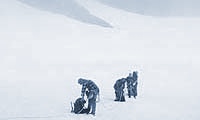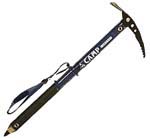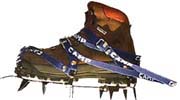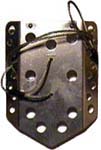|
You must be able to walk over a glacier in a safe way and therefore you have to use the right equipment's. Of course there is a wide selection of these equipments and you need to know how it works and what you need.
Therefore we say that a lot of equipment can't replace poor knowledge. We recommend a glacier course that gives you the basic principles. You can also talk to an experienced hiker who has been on the glacier before.
|

|
|
|
You should choose clothes which are genuine when they are facing snow and ice.
We must count on that the weather is bad and then you need reel underwear, a cap and gloves, which prevent against wet. Gaiters are of course nice to have when you walk in the snow.
It is also important that your clothes cover the entirely body, when the ice is very old it contains a large amount of microbes.
|
|
|
The footwear you choose must endure long hiking in wet snow. The sole should be stiff to work with ice trek.
I prefer double socks in my shoes. Who want to be frozen?
|
|
|
The rope is the most important safety equipment; it stops you when falling in a crack. Important quality for the rope is the elasticity and break strength.
For a glacier hike you can use a 9-11 mm climbing rope but a 10-11 mm cordell rope is also good. Normally the rope length is 45 meter. The rope should also be prevented against wet.
|
|
|
Harness is divided in three types, body harnesses; sit harnesses and breast harnesses. The most flexible is to buy a breast- and a sit harness, which means that you can use them separates.
The breast harness prevents after a fall that you don't lay with your head down. The harness is tied together with a knot.
|

|
|
|
The axe is used for several things.
-
Reconnoitering when passing snow bridges.
-
When cutting foot steps in the ice.
-
As support in steep slopes.
-
Help when climbing.
-
As a brake when falling in hillsides.
-
A tool in rescue works.
The length of the axe should be about 80 cm but it's individually. The strap to put your arm in is very useful so you don't lose the axe.
|

|
|
|
The ice trek will give good grip on the ice. Under there's generally about 10 spikes.
You have two different types of ice treks, fastening with straps and a step-in fastening.
If you use straps don't forget to tighten them after a while.
|

|
|
|
The most secure is to use screw carbines. Then the knot doesn't risk falling out of the carbine. Don't choose too small carbines, it's more difficult to work with when you got gloves on you.
How many do you need? It's hard to say, but every rope team should short it out before based on experience, your own or others.
|

|
|
|
When rescuing your partner you use a screw carbine with a little pulley. If you do so, the force will be halving.
|

|
|
|
Used as a secure on ice. The screw is hollowed and has an inside thread. Choose a screw with large threads, it's a good compromise. The length about 20 cm is suitable.
Get a cover to carry the screws when you don't use them. It'll avoid damaging your garments in the backpack.
|

|
|
|
In snow you use a snow anchor as secure. The anchor is made of an aluminum plate with a wire.
How much you can load the anchor depends on the snow quality. In powder snow you'll need a bigger anchor to get the same tenacity.
Before using it you must practice because if you don't you might place it wrong and then you can get nasty consequences.
|

|
|
|
You wear sunglasses when you walk on snow when the sun is dangerous for your eyes. A helmet is also good, especially on ice.
If something is broken you should have a repair kit.
|
Intro | Facts | Equipment | Knots | Safety technic | Comrade rescue
|